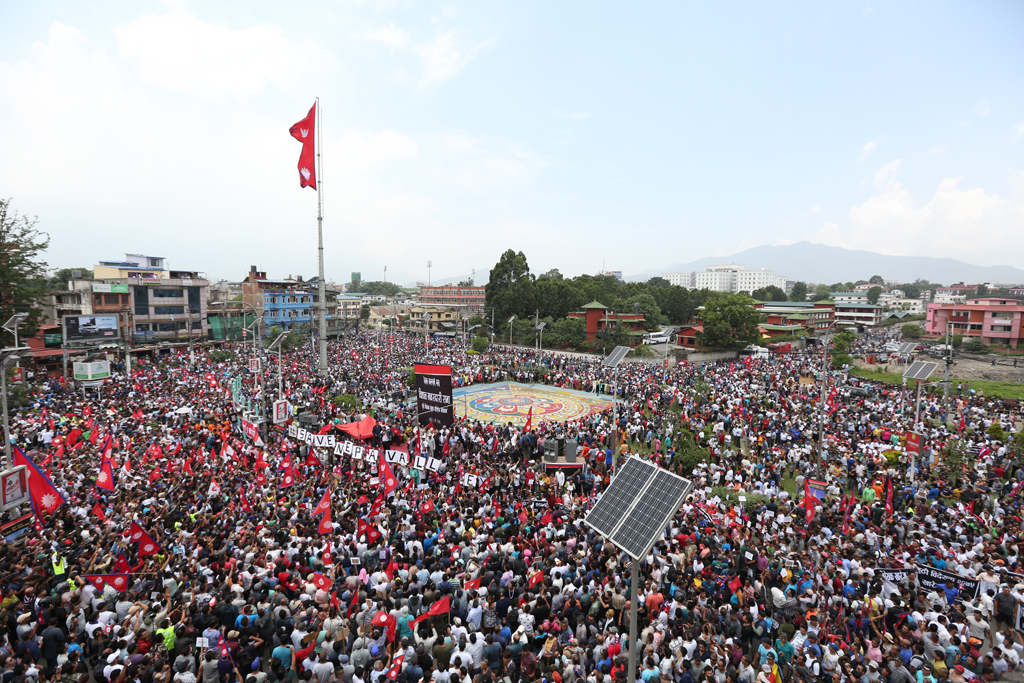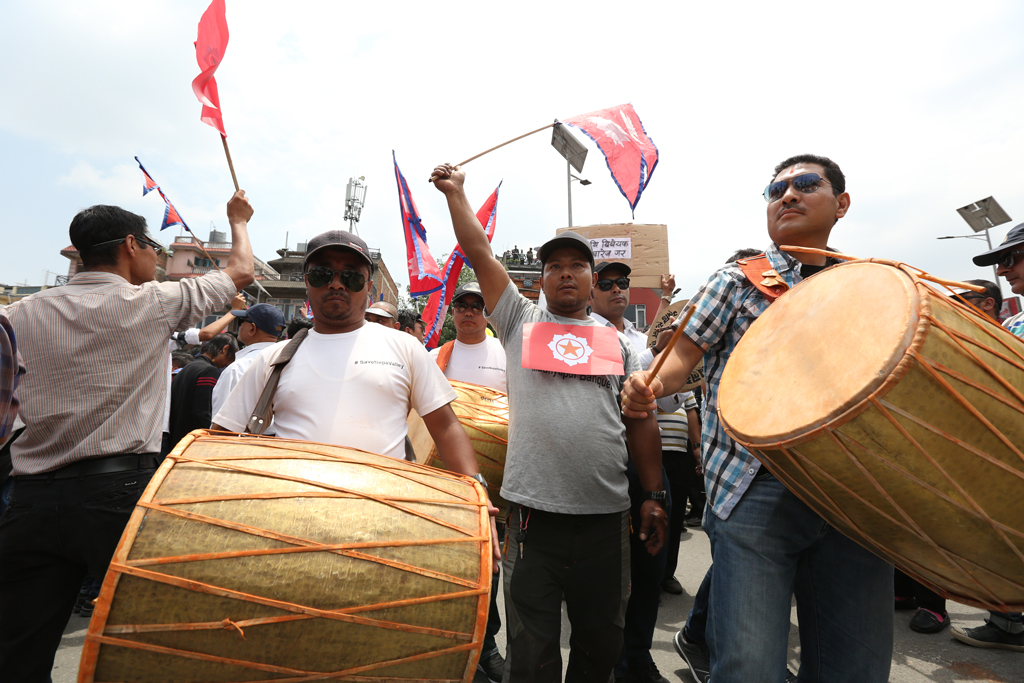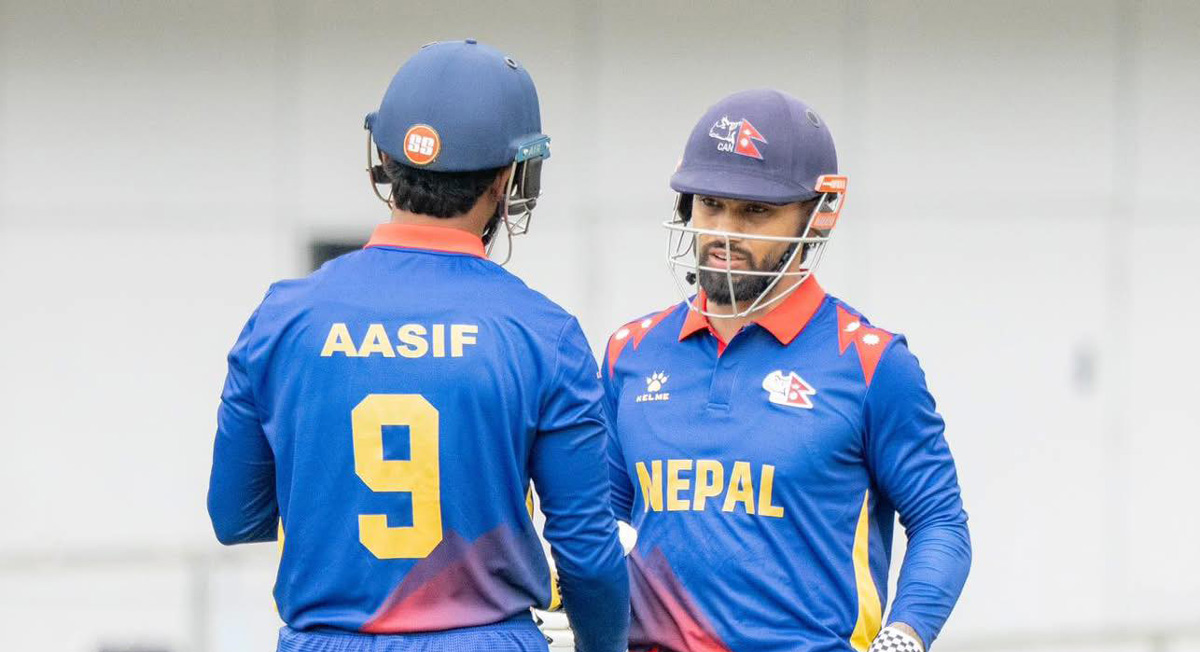It's Time To ....
EXPLORE ANCIENT KALASH IN KATHMANDU
Kalash (Gha) is a traditional Newar ‘material culture’ that dates back at least to the Licchhavi period. What can be better than a walking tour of Kathmandu valley to catch a glimpse of the rich ancient heritage of Kalash, and explore its connection with the people of old Kathmandu? As this free walking tour is conducted in Nepali, it may not be relevant for people who do not understand the language. The SherpaShah Heritage fund-facilitated tour that happens every Wednesday starts at 2:30 pm from Sigal and ends at 4 pm near Basantapur, Kathmandu. Call 9843241490 for details.
RISE HORSE RIDE IN POKHARA
Horse riding is a great way to explore the beauty of the Pokhara valley. If you wish to go to World Peace Stupa or Sarangkot, you may want to travel on a horse. The Pokhara Horse Riding Tour starts from Lakeside and ends at Sarangkot or World Peace Stupa, as per your choice. ‘Pokhara Tour, Pokhara Sightseeing & Adventure Activities’ organizes these tours every morning starting 7 am. The tour is for 6 hours and costs around Rs 10,000. To book, call 9802014557.
LEARN TO PLAY SARANGI IN LALITPUR
Project Sarangi Center has opened registrations for Sarangi classes for its July intake. Located at the Arun Thapa Chowk in Sanepa, this music lesson and instruction school has been providing formal classes to promote the melody of the handmade Nepali Sarangis. The school also organizes various “Sarangi Bhela” musical nights for the purpose of awareness and recreation through the mesmerizing traditional music. The project is ideal for students with an interest in traditional Nepali music, specifically the “Sarangi”. Classes run from 10 am to 6 pm on workdays. For details, contact 015553511.
Reminiscences at the Siddhartha
Ishan Pariyar’s painting exhibition “Reminiscences” at Siddhartha Art Gallery, Babarmahal, highlights the endurance of historical monuments in the fleeting materialistic world.
The exhibition brings together the paintings, each of which represents a certain deity and its everlasting property. Pariyar also decries our indifferent attitude towards the smuggled, damaged and stolen artifacts of great cultural and historical value.
The acrylic paintings have a boat as a common object to represent the voyage of life. Similarly, each artifact has been placed creatively to show its historical importance.
The exhibition will serve those with keen interest in history, culture, religion and a taste for authentic yet modern
artwork.
Each canvas consists of religious sculptures as its basis, supported by earthy materials like sand, pebbles, worn-out boats, waves and tides. Sketch representations of the paintings are also displayed. An added twist is that the entire oeuvre consists of subtle green and blue hues.
The exhibition ends on July 9
Should fathers attend the delivery of their babies?
After nearly three decades of reform efforts, the parliament passed a liberal abortion law in 2002. This granted all Nepali women the right to terminate their pregnancy without regard to their present or past marital status. Women were granted the right to terminate a pregnancy of up to 12 weeks without anybody’s consent. In 2005, this law was challenged by Achyut Kharel, a lawyer. He argued the law discriminated against men, as a woman could terminate a pregnancy without her husband’s consent. Nepal’s Supreme Court dismissed this case after the Kathmandu-based Forum for Women, Law and Development (FWLD) convinced the court that a woman’s human rights would be violated if spousal consent was required for abortion.
Nabin Kumar Shrestha, an advocate and program manager at FWLD, says it had to do with what women go through during a delivery. “From what I have heard, some women give birth relatively easily while others endure such pain that they faint a couple of times when they go into labor. Even if a tiny percentage of women die during delivery, lives are still lost,” he argues. He therefore thinks that it should be a woman’s choice whether to go ahead with the delivery or to abort.
Shrestha says when we talk about reproductive rights, a phrase we commonly hear is ‘My body, my rights’. “To drive home why this is important and make men see the pain that a woman goes through to bring a new life on Earth, they must attend deliveries,” says Shrestha. He thinks it is important for a husband to be present during a delivery.
“At least now, urban Nepalis have started having only one or two kids. But some communities are religiously bound to avoid contraceptives. So they produce many children, and men usually have the say in it. But if the men could appreciate the pain their partners endure, the scenario might be different,” he says
Nepali law is currently silent on whether men should be allowed into or barred from birthing centers. Each hospital or maternity center has its own guidelines. Shrestha recalls the time when his wife gave birth naturally 20 months ago, and he was not allowed to enter the birthing center. “In fact, no visitors were allowed,” he says.
However, some hospitals in Kathmandu such as Norvic and Prasuti Griha (Paropakar Maternity and Women’s Hospital or PMWH) allow men into the birthing rooms.
Encouraging men to see
Established in 1959, PMWH is a government-owned hospital that provides most of its services for free. It has seven beds in its birthing room. Curtains are used in the room to maintain a semblance of privacy. A sign on the door reads: “Only husbands and female visitors are allowed in”.
Asha Devi Prajapati, head nurse at PMWH, says that only after a birthing room was opened in 2007 were husbands allowed to enter it, but only in case of a low-risk normal delivery. (Earlier there was no separate birthing room, only a general labor room where
women delivered babies.)
As many as 60 deliveries take place every 24 hours at PMWH. Only 12-15 are low-risk normal deliveries.
Dr Jageshwor Gautam, Director of PMWH, says that in the labor room where women are kept right before they give birth, men are not allowed to stay for lack of space. (They can get in just to pass medicine and food.)
Parbati Shah, who gave birth to a baby on June 11 at Prasuti Griha, wishes her husband was there with her in the labor room. She felt she would pass out and her back hurt continuously. “I wanted someone to massage it. But visitors were not allowed in. The room had about 60 women, all of whom were in similar conditions,” says Shah.
A nurse beckoned Puleshwor Majhi into the birthing room when his wife Kalpana Majhi gave birth to a baby boy on 24 June at PMWH. It was the first time he saw a baby being delivered. “This is my second child. I held my child even before his mother did. She was writhing in agony. I was filled with empathy,” remembers Puleshwor.
When asked if he would be there again with her if they have another baby, he ruled out a third child. Kalpana said it was really hard giving birth, but Puleshwor’s presence made it easier.
Nurses at the same hospital estimate that only around 65 percent of the men agree to witness the birth of their baby. Even though they call the men into the birthing room, most try to get away saying they are scared. Others say they get dizzy when they see blood. The nurses say women generally feel positive and give birth faster when their partner is present. They have witnessed men fainting at the sight of a baby being born in the birthing room. “We get confused as to who we should attend to,” they joke.
When Apsara Tamang was about to deliver a baby on June 24 at PMWH, her husband Bijay Tamang was called into the birthing room, but he did not go in. “I thought someone experienced should be there during the delivery, so I asked her aunt to be there instead. I am a man. I wanted to be there, but then I was outside managing food, medicine and other essentials,” says Bijay. Apsara says she did not mind whether or not Bijay was present in the birthing room.
Understanding her pain
Norvic is one of the most expensive private hospitals in Kathmandu, where a normal delivery costs Rs 125,000 on average. Dr Achala Vaidya, head of the department of obstetrics and gynecology, says they ask a pregnant woman if she wants any visitor while giving birth. “The husband understands the wife’s pain and his respect for her increases when he sees her giving birth to their child,” says Vaidya. She adds that the presence of both the partners during delivery makes the moment truly amazing and unforgettable for them.
“A woman feels supported when her partner is there to pat her, wipe her sweat and bring her water. She feels mentally stronger and can go through the painful process more confidently,” says Dr Vaidya. She has been with Norvic for 14 years, and her experience tells her that a woman usually wants her husband to be present while she goes into labor, and that his presence gives her some comfort. And often husbands also demand that they be allowed to witness the birth of their child.
However, during her earlier stint at Prasuti Griha, she hardly saw any husband making such a demand. “I saw that men usually took it for granted that their wives will produce a baby. They had the perception that their wife has to give birth somehow,” she recalls. Dr Vaidya thinks it should be made compulsory for fathers to attend normal deliveries.
The struggles of one Newar community to hold on to its traditions
The Guthi bill that was tabled by Minister of Land Management, Cooperatives and Poverty Alleviation Padma Kumari Aryal was met with strong protests, especially by the Newars of Kathmandu. The bill proposed to regulate all religious sites, nationalize both private and public guthis, and ‘better manage’ guthi lands and assets.
Following the protests, the government withdrew the bill on June 18. Still, a peaceful demonstration was staged on June 19 at Maitighar Mandala, demanding that the government scrap the bill altogether. Nardevi Guthi estimates more than 100,000 people from different ethnic groups of Nepal took part.
Among the many castes within the Newar community is Jyapu. Jyapus (“competent workers” in Newari) have rich traditions. Their pottery work and unique traditional music enrich the Newari culture. If the Guthi Bill was endorsed, Jyapu guthi operators worry, it could have vastly altered their way of life that they have preserved for generations.
Satya Narayan Dangol, 65, president of Nardevi Guthi and vice-president of Jyapu Maha Guthi, says that one reason guthis were formed, centuries ago, was to manage land used for religious and cultural purposes. Different guthis serve different purposes. There are 60 guthis in Kathmandu under Jyapu Maha Guthi, with around 200,000 members. Even under these 60 guthis, there are smaller guthis that handle different tasks. For example, under Nardevi Guthi, there are 24 guthis that have direct contact with the government for the celebration of 24 compulsory Jyapu festivals. Similarly, there are other Jyapu guthis outside Kathmandu.
Each Jyapu guthi has a unique responsibility during the celebration of festivals, including organizing bhoj (banquets). Dangol gives an example of how the festivals would have been affected had the bill passed. Jyapu Maha Guthi organizes ‘Devi Nach’ in Nardevi Chowk in Kathmandu during Ghode Jatra. This dance is performed for 36 hours straight, attracting locals and foreigners alike. The next day, Jyapus pull a chariot, taking it around the core areas of Kathmandu valley to celebrate Paanchare (Nardevi Jatra). “How would the government have managed the logistics on such a scale?” Dangol asks.
"How would the government have managed the logistics on such a scale?"
Satya Narayan Dangol President of Nardevi Guthi

Don’t need no permission
Then there are small Jyapu guthis whose only work is to provide drinking water to visitors during Rato Machhindranath Jatra in Patan. Had the Guthi bill passed, Dangol wonders if the government would have provided contractual work to serve drinks during festivals, as he is certain small guthis would have dissolved. Moreover, assets such as chariots, idols, and jewelry used in various cultural dances would have all belonged to the government. And guthi operators would have required permission to use them, which Dangol says would be unacceptable.
Like other Newar communities, Jyapus also have their own Kuladevata, Clan God, which is passed down generations and is usually owned by guthis. Dangol says that it is infuriating to think that his pious Clan God would also have belonged to the government. “I would have to seek the government’s permission to pray to my own Clan God. This reminds me of what Mao Tse-tung did in China,” he says, in what had become a common refrain of Newari protestors. Chairman Mao had launched a destructive campaign against the ‘Four Olds’—old customs, cultures, habits, and ideas—as part of the Cultural Revolution in the 1960s.
Ashish Maharjan, 26, who also hails from the Jyapu community, says, “The government has no right to touch our holy and treasured rituals and idols.”
Instead of preserving culture, Dangol says the government had been bent on trying to control guthi lands and assets. He adds that funds for the “Bahra Barse Devi Naach”, which takes place every 12 years and is organized by Nardevi Guthi, used to come directly from the Finance Ministry. He points out Jyapu Maha Guthi received Rs 200,000 for the last time in 1969 through King Mahendra. Since then, the government has refused to provide money and so the guthi operators are managing funds themselves.
Guthis, such as Sana-Guthi, Raj-Guthi, Si-Guthi, which play a vital role in keeping community spirit alive by organizing communal meals and providing solace to families who have lost a member, would have also been affected.

Suggest, don’t suppress
Dangol says Si-Guthi currently has Rs 4 million, collected by organizing a biannual bhoj. This bhoj takes place on the day of Yomari Punhi (on full-moon day in November/December) and then exactly six months later. Members have to pay a minimum amount to organize the bhoj, and any excess money they contribute goes to the Si-Guthi fund. The money is later used when someone from a family belonging to the guthi dies. Guthi operators visit the house and manage all death rituals. Dangol wonders if the government officials would have been willing to visit the families of the deceased and how they would have managed the intricate rituals.
Spokesperson of Ministry of Land Management, Cooperatives and Poverty Alleviation Janak Raj Joshi says the bill was tabled to make guthis more systematic and organized. He adds that given the widespread concern over the bill, the ministry, in any case, would take into account everyone’s concerns and interests before moving forward.
Dangol says if the ministry wanted to make guthis more systematic, it could have offered suggestions to existing guthis “instead of trying to replace a system that has been in place for generations”. The nature of guthis in Janakpur or Dang should not, he adds, influence the government’s decision on managing guthis in other regions of the country. He thinks the bill would have been more appropriate for a place like Dang, where landless peasants have worked the lands of others for generations.
But that’s not the case in Kathmandu. “Jyapus in Kathmandu have donated a lot of lands to guthis. For example, my forefathers gave some of their land to their children and the rest to various guthis,” says Dangol. He thinks that the government should solicit advice from the local governments before proposing a similar bill in the future and that each province should have a different set of laws governing guthis.
Had the bill passed, Dangol says, it would have affected not just Newar guthis, but also those of other ethnicities. Dangol adds that guthi operators should reflect on why guthis were formed in the first place and try harder to meet those needs.









_20190628154538.JPG)










